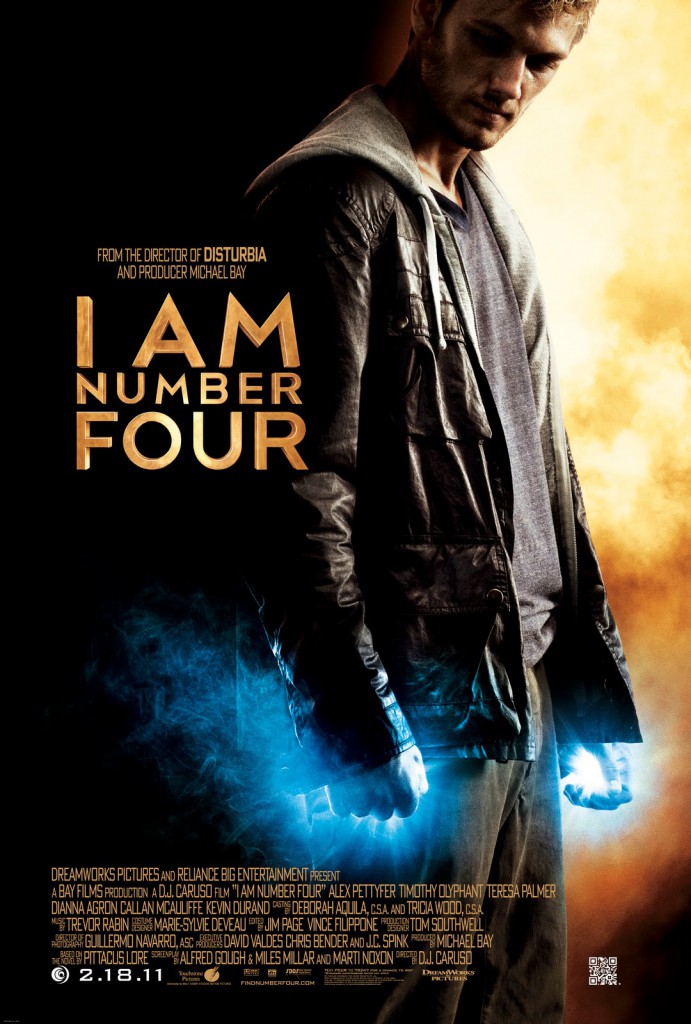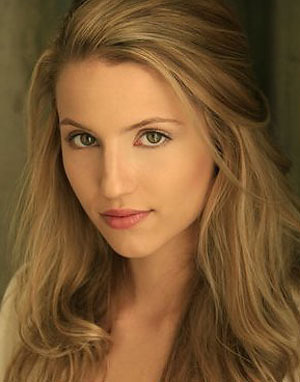I Am Number Four: Why Movies Are Rarely As Good As Books
 I am in my mid-thirties and my wife is in her mid-twenties. The eight-year difference between us can be jarring at times, especially because I am a pop culture junkie and she grew up without cable television (and rarely watched the network television she did have access to, as I learned when I discovered she’d never seen an episode of The Dukes of Hazzard, even in rerun).
I am in my mid-thirties and my wife is in her mid-twenties. The eight-year difference between us can be jarring at times, especially because I am a pop culture junkie and she grew up without cable television (and rarely watched the network television she did have access to, as I learned when I discovered she’d never seen an episode of The Dukes of Hazzard, even in rerun).
Recently, this generation gap has became particularly evident. A close friend of hers has formed a book club, of which I am the only male attendee and also about the only thirty-something. As such, the books that we’re reading tend to track toward chick lit, much of it in the Twilight-like realm of paranormal, horror, or fantasy-related romance novels, many targeted toward young adults.
Some of the books that fall into this category these days are truly outstanding, such as The Hunger Games, but many of them have serious issues … which brings us to last month’s book, chosen in part to coincide with the release of its film version: I Am Number Four.
I Am Number Four: The Premise
As the planet Lorien was being destroyed by a race known as the Mogadorians, a group of Loriens came up with a plan that would have put Jor-El to shame. They cram 9 of their young on a spaceship to Earth, along with 9 mentors. The Lorien youth are of a class known as the Garde, who will eventually develop powers, called Legacies, intended to defend Lorien. The mentors are part of the class known as Cepan, who help train the Garde.
However, they knew that once the Mogadorians finished decimating Lorien, they’d follow the ship to Earth and ravage it as well. The Loriens implemented a protective charm on the Garde children, so that they could hopefully survive long enough to develop their Legacies and defend the Earth. The protection is circumstantial, however, based on a rather elaborate rule: the 9 children are numbered and they can only be killed in sequence.
The first three have been murdered, and the novel follows the teenage Number Four, the next in line to be assassinated by the Mogadorians, as he falls in love, develops his powers, and generally tries to survive in our world.
I Am Number Four: the Book
I actually enjoyed the book version of I Am Number Four … at least enough that I will read the sequel, The Power of Six, when it comes out. By the end of the book, I had genuinely grown to care about Number Four (whose cover identity is “John Smith”), Henri, their relationship, and the relationships that he forms with the human characters in the book – his love interest Sarah, the geeky sidekick Sam, and the bully jock Mark. That, to me, is one of the key hallmarks of a good book.
In other areas, it falls far short. It’s a bit of brain candy, without any particular depth or meaning beyond the surface story. I highly doubt that I’ll see a call for an anthology entitled I Am Number Four and Philosophy showing up in my e-mail inbox anytime soon. (As opposed to, for example, the upcoming Green Lantern and Philosophy. Some other and Philosophy titles currently in the pipeline include CBS’ The Big Bang Theory, Marvel’s The Avengers, the Stieg Larsson Millennium trilogy, and Suzanne Clarke’s The Hunger Games trilogy.)
One important point, which is of relevance to readers of genre fiction: I Am Number Four has to be read as fantasy rather than science fiction, or else you’ll be driven insane by the lack of scientific accuracy. At one point, the Cepan mentor, Henri, even describes Lorien in this way:
It’s a special place, John. An old magic exists at its very core. That’s where your Legacies come from.
Okay, so this is really about as scientific as Kal-El being supercharged by the Earth’s yellow sun. The logic at work in the story’s premise is fantasy logic, not scientific logic. For example, how are these 9 surviving Garde supposed to stop the Mogadorians when all the Garde Loriens were unable to save their own planet? Well, it’s destiny, I suppose.
It took me a while to get on board with this, to treat it as a fantasy story featuring aliens rather than a hard science fiction story, but once I did, the book does about as well as can be expected in pulling it off. I’d like some more depth, but the characters are the driving force of the story, and they’re painted well enough that I was drawn in.
The movie, on the other hand…
I Am Number Four: the Movie
Two books are sitting in front of me as I type this. One is the 440-page I Am Number Four, which was turned into a 90-minute film. The other is the 309-page classic Harry Potter and the Sorcerer’s Stone, which was turned into a 152-minute film.
And therein lies a major difference between a fantastic novel-to-film transition and a poor one: deciding how much, and what parts, of the book to cut. I Am Number Four only works on the basis of the characterization, and in transitioning the novel to film, they decided that one thing they were able to cut was the characterization … a mistake which the Harry Potter franchise hardly ever made, but which Michael Bay seems incapable of avoiding.
Here’s an example: In the book, it is evident from the very beginning that John is fed up with running and hiding, with never being able to develop real friendships with his peers, with constantly waiting for the other shoe to fall. This is clearly portrayed through the first few scenes in the book, where we’re inside John’s head.
In the film, this is not clear, so when he arrives at his new school, many of his actions make no sense whatsoever. The premise is well established, so it’s clear that if he dies, the Mogadorians will be one step closer to killing off the remaining Garde on Earth and, ultimately, destroying humanity. His survival is important, so he has to keep a low profile, else the Mogadorians might discover where he is. Henri goes to great lengths to see that his picture doesn’t show up on the internet and no strange reports ever surface about him.
Now, if he’s supposed to be keeping such a low profile, why is he getting into fights with the star of the football team on his first day at a new school? In the book, this conflict is a manifestation of his deep frustration with this status quo, his need to stand up for something; in the film, it’s just absolute foolishness.

His relationship with Sarah also loses a lot in translation. In the book, there’s clearly an instant attraction, but there are many interactions that show how they connect with each other, growing closer. In the film, there are a couple of brief scenes and he’s willing to risk his life (and, by extension, the lives of the remaining Loriens and, ultimately, humanity) for her, making this fall in the Anakin/Padme realm of realistic romances. I don’t care how attractive Dianna Agron is (and, as you can see from the picture, she sure is purty), when the emotional relationship between two characters is a central component of the film, you have to put the time in to actually develop that relationship in a realistic way.
Some changes served no real purpose. For example, instead of being a historian and tutor, as in the book, Henri is turned into a warrior-type guardian. The Legacies that John develops in the book are relatively mundane, but in the film they’re far flashier. (I actually liked one of the changes about how his primary power worked, but I won’t go into further detail about it, as it spoils a major plot twist in the film. Granted, this is a plot twist given away in the trailers, but still, I won’t be one to compound an error.)
There are some things that the film gets better than the book. Some events are resequenced and, I think, the overall story flow makes a bit more sense in the film. There need to be substantial more scenes to explain the underlying background and mythology, to make it believable, but these scenes could have been worked into the film fairly easily.
The reason books work so well is that we really get inside the characters. We become the characters, slip into their skin, in a way that films cannot quite capture. In a film, we are always watching the action; in the best novels, we are the ones carrying out the action. The novel I Am Number Four is able to make this work, to make us believe what’s happening just enough to slip into the role of the main character. In the film, we’re barely given a reason to care, as the director hopes we get distracted by all the great special effects and fight sequences.
They were nice, but for me, they just weren’t enough.
You’ll get no disagreement from me that the book is far better than the movie in the case of “I am Number Four,” but in my case it was the sheer entertainment of the film that prompted me to buy the book on my Kindle — as I walked out of the door of the theater.
The book may not be the most sophisticated piece of fiction ever penned for Young Adults, but it did have the marvelous effect of making my 12 year old boy fixate upon it in bug-eyed wonder until he turned the last page.
That’s worth something, that is.
I agree with Hocking.
Not everything can be, should be, would be, might be, could be, must be, ‘Enter-Necronomical-Novel-of-Eldritch-True-Art’.
I like Gene Wolfe and David Drake.
I like Liszt and The New York Dolls.
I like Champagne and Coors.
…Okay, I don’t really like Champagne, but you get the point…
[…] I Am Number Four : Why Movies Are Rarely As Good As Books […]